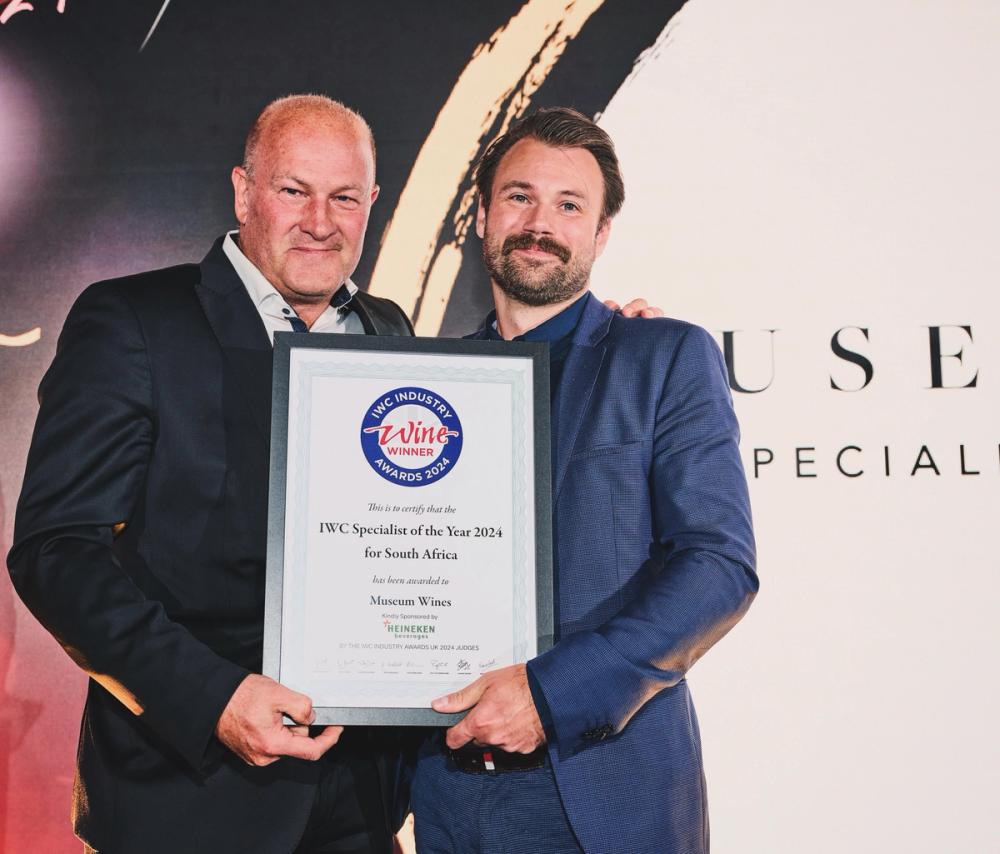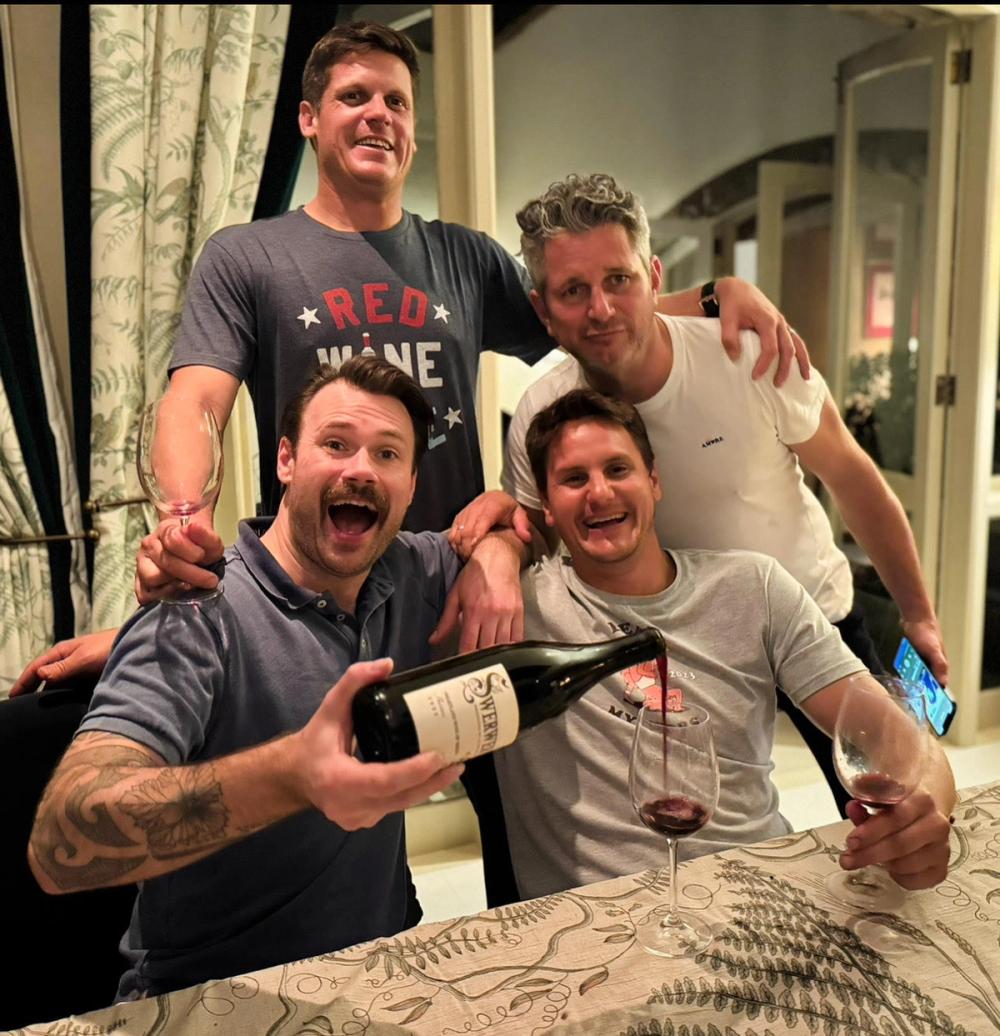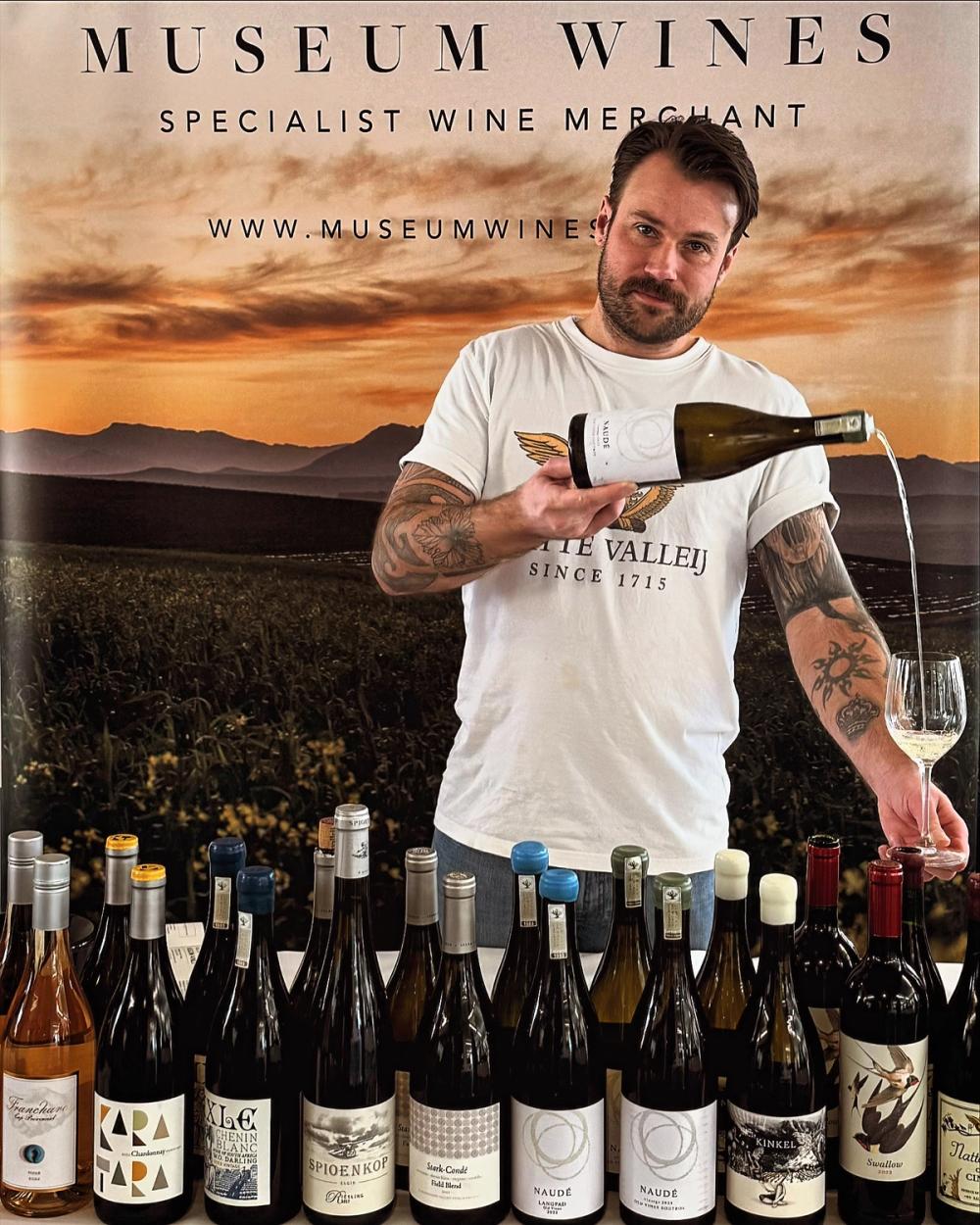As a wine importer you are clearly looking to bring in new producers to your range all the time - but it must be a delicate balance as another producer might mean another winery gets less attention. How do you tackle and address that balance?
We certainly try to avoid diluting our existing range by having more supply than demand for certain categories, or cannibalising existing listings to gain traction for new ones. Being a South African specialist we have a lot of Chenin within our range so it would be difficult to add much (or any) more unless it had its own USP with a stylistic difference such as being amphora aged, grapes sourced from an iconic old vineyard or being seriously lekker juice at its price point that we find impossible to resist.
What criteria do you use when taking on a new producer and their wines?

Museum Wines has become one of the most important and successful South African wine specialist suppliers in the UK
The wines have to be good, for a start. That might sound obvious but we don't list anything we wouldn't happily drink or serve ourselves. Once that has been ascertained are they worth what the producer wants to charge for them? And do we think we have existing demand so they hit the ground running? There are some fantastic South African rosés being made but they're often more expensive than those from Provence or regional France which is what the market demands.
The producer also needs to be realistic about volume potential, some seem to forget that in a market like the UK your Shiraz, or Syrah is competing not just with other South African wines but those from Australia or the Rhône as well. Things don't happen overnight and they'll need to invest in a sample budget, trade visits etc to gain equity in a crowded market.
From our side we'll also look at how many routes to market the wine might have. A wine that we can sell online for £20-25 and also to the trade at £10-12 is immediately in a sweet spot, then if it has a good rating on Vivino that's another tick and if I can think of a few private clients who'll be keen on it for every day drinking wine we're onto a winner. More enthusiastically priced wines might have less immediate demand and be better suited to Michelin Star restaurants and Greg Sherwood's private client database but typically will be limited availability anyway so as long as the producer isn't expecting us to sell pallets of it then it will still be viable.
Will you take on all their wines - or have a strategy in terms of how many wines from a new producer you are willing to take on?
We do tend to list "most" of a producers range, sometimes if there a few similar wines within their offering we'll take the one we think we'll have the most success with and then decide if there'd be a market for the other wine, which might be a more serious or more modest version. Producers appreciate it when you support the full range rather than picking cherries, even if you only take a smaller quantity of something you might think has less potential in the trade but could still work as an online proposition. I’s the thought that counts.
Is it a case of scaling it up - try with one or two and then build them up? Or does that not really work?
In terms of building an order we tend to split the first across at least three wines, probably not more than five or six. You want enough to have to sell if it gets traction but also not too much of anything in case it doesn't work. Then on the second order you'll have an idea of what is doing best and can put an order together against forecasted demand. If a producer only has one or two wines then you have to calculate the risk of the eventuality of it not working and you being left with a pallet or two to get rid of.
You also need to have your customers on board and willing to take on new wines and producers - how do you manage that to get an idea of how interested they are in listing more wines from you?

Daniel Grigg has built close partnerships with his South African producer partners - and is now shipping 10 pallets of wine a year from Alex Milner at Natte Valleij
Being at the coal face of all of our routes to market I look after the vast majority of our trade accounts personally, especially those with a keen interest in our South African agency wines. Having been with Museum Wines for almost a decade now I have a first hand insight into what will or won't work for our customers and count many as friends who will share not only what is or isn't working from our range but from competitors as well. Whether it's a lack of continuity of supply, a lack of attention from a rep, or a price increase making a listing less attractive which will allow us to offer an alternative.
If they take on a new producer do you have to accept that might mean they stop buying wines from another one of your producers?
We try not to create too much competition between our producers although some on and off trade customers like to rotate wines, for example, and not offer the same Chenin Blanc all year round, or have a lighter style Pinotage during the summer and a richer, bolder style in the winter, so its important to have sufficient depth within our range to accommodate that and prevent them seeking their alternatives from elsewhere.
Can you give us an example of a producer you have introduced to your range and how you have gone about doing that in order to get customer support?
We took on De Kleine Wijn Koop earlier this year and they sent samples over for us to show at London Wine Fair even before the wines had arrived. We've only had the wines since June but they have already travelled as far as Northern Yorkshire in the boot of my car and we have trade listings with several customers in London and nationwide.

Daniel Grigg with Tamlyn Currin of jancisrobinson.com and Oz Clarke
Tamlyn Currin has already published enthusiastic notes and scores on jancisrobinson.com and Wynand Grobler (proprietor and winemaker) is coming over for our portfolio tasting on September 24. Getting the wines visibility, whether it's on social media, or on a critics website is key, especially with wines that have had previous representation, but with wines of this nature you need to get them into the customer's glass and get them as excited about them as we are.
What steps did you go through with that producer before you decided to take on their wines?
I first met Wynand in 2017 during a trade visit when he was represented by Red Squirrel, we had dinner at Hawksmoor with Nik (Darlington) and Alex Milner of Natte Valleij who had recently joined the Museum Wines portfolio. We'd kept in touch but not spoken for a couple of years until prior to our annual trip to South Africa this year. I had noticed they were no longer listed on the Graft website and pinged him a Whatsapp to ask if he was looking for a new agent and he was.
There were a few wines leaving the Museum Wines portfolio for various reasons and his looked like they would fit the bill as (almost) like for like replacements at the price points we were looking for. We arranged for him to join us for a braai we had planned with Jasper Wickens (Swerwer) and Sakkie Mouton on the first night and tasted through his comprehensive range.

Daniel Grigg says it is important to able to share a few glasses of wine with the producers he works with
The three of them are already great mates and it immediately felt like he was part of the gang, whilst it's important that the relationship is commercially viable it's equally important that you can share too many glasses of wine and stay up too late with them as well. I always say no one will buy wine from you if they don't like you and indeed I've opted not to work with certain suppliers because their reps exhibited qualities I found less than endearing. Similarly, I'll hardly be inclined to champion your wine if I don't like you.
We started off with an initial order of six wines (from a selection of 18) and have just confirmed our second order for more of what we've already gained listings for as well as two other wines we feel will work for the customers who have listed the wines already as well as others who haven't yet.
Do you use promotions and reduced pricing etc in order to introduce them to your customers ? If not what works best?
Something we look for when listing new wines is that they offer tremendous value for wine, which is easily done in South Africa. The wine's quality should speak for itself without us having to establish as discounted price (which customers will then want forever) to get it traction. Of course, if a customer thinks they can sell lots of it, whether that's by the glass on a list, or across a group of off-trade sites, then we can go hunting for our pencil sharpener - especially if it ensure that we get the listing ahead of a competitor. To do this we open bottles and pour wine, we're not trying to reinvent the corkscrew.
Is it harder to take on a new producer in terms of taking a risk - with all the extra admin and dutycosts - you have to make sure you are on to a winner from the off?
Typically if you are considering them in the first place there's a gap for their wines in your portfolio. If you’re already worrying how you're going to sell the wines and to who before they arrive then it's probably wise to ease off the gas.
We factor in the terribly dull admin costs to work out our landed price and then look at what we'll need to sell it for. Would we pay that for it? With our wealth of experience, which includes the owner of the business having run successful gastro pubs and Greg Sherwood MW as the senior buyer at Handford for 22 years, we know what it's like to be in our customer's shoes. If we don't think it's worth what it's eventual price will be on a wine list or shop shelf then we might convey that to the producer, or just not list it at all.
How do you define success - the number of customers that list the wine, or the number of cases sold?

Daniel Grigg says it takes time to build momentum with producers in the UK market which is why having a multi-channel approach works best
Obviously the goal is to have lots of customers - who buy lots of cases! The more broadly distributed a wine is the more consistent your sales will be, if you rely on a fewer customers buying a large volume between them you can soon end up with too much wine and not enough demand if one of them goes bust, the buyer leaves, they choose to skip a vintage or their own customers have a change of heart.
It’s lovely to have wines listed with Michelin Star restaurants or at posh wine shops, but you are unlikely to meet a producer's volume ambitions from those alone, so getting the wine listed with a diverse spread of customers is the best way for it to become a success within your range.
We're running a business so it's important it is a commercial success, meaning it's actually profitable as well. If you have to give it away to get listings and achieve volume I wouldn't quantify it as successful. In fact, I've just delisted a wine because if priced above £19.99 it doesn't sell anywhere near as well, and with recent increases from the producer it should be £24.99. It was one of our highest volume wines sold through Vivino, with only a couple of trade listings, and after their commission, free delivery and a courier proof box our 'net net' margin wasn't worthwhile.
How long do you take before deciding if a new producer and their wines are working in the trade?
It depends on the producer and their range. If the wines are a very commercial style at a modest price point they can be an overnight success but if they are more niche it can take years. For the first three years of working with Natte Valleij we did about a pallet a year and now he's the producer we buy the most wine from - 10 pallets in 2023 - and we sell it all.
What is the average length of time it takes from initial talks and tastings to actually listing and selling wine into the trade?
Again, it's dependent on the producer. The two wineries we've taken on this year, Stony Brook and De Kleine Wijn Koop, it was three months from tasting in South Africa to the wines landing into bond in the UK. However, at the end of last year we shipped from Draaiboek for the first time having been speaking to them since 2021 but at that time there was only one wine with an RRP of £40 so it was difficult to justify ordering or foresee selling (in a timely manner) a pallet of a wine at that price with only one vintage to its name, regardless of quality. Especially during what was still uncertain times due to the pandemic. Now there's two wines, a third on the way, plenty of critic scores backing up the hype and it's off to an exciting start.
* If you would like to share how you and your business buys wine or spirits and decides to work with a new producer then contact Richard Siddle on richardsiddle5@gmail.com.
* You can find out more about Museum Wines at its website here.
Museum Wines 2024 Portfolio Tasting
Museum Wines is hosting its annual portfolio tasting today, September 24, at Brackenbury Wine Rooms in London. Producers involved include: Colmant, Natte Valleij, Swerwer, De Kleine Wijn Koöp, Holden Manz, Sakkie Mouton Family Wines, Spioenkop, Stark-Condé, Stony Brook, Terra Paisible, Winshaw Vineyards, and Uva Mira Mountain Vineyards.
When: September 24.
Where: Brackenbury Wine Rooms, 111-115 Hammersmith Grove, London, W6 0NQ.
Time: 11am to 4pm.
Register: Email daniel@museumwines.co.uk.
































